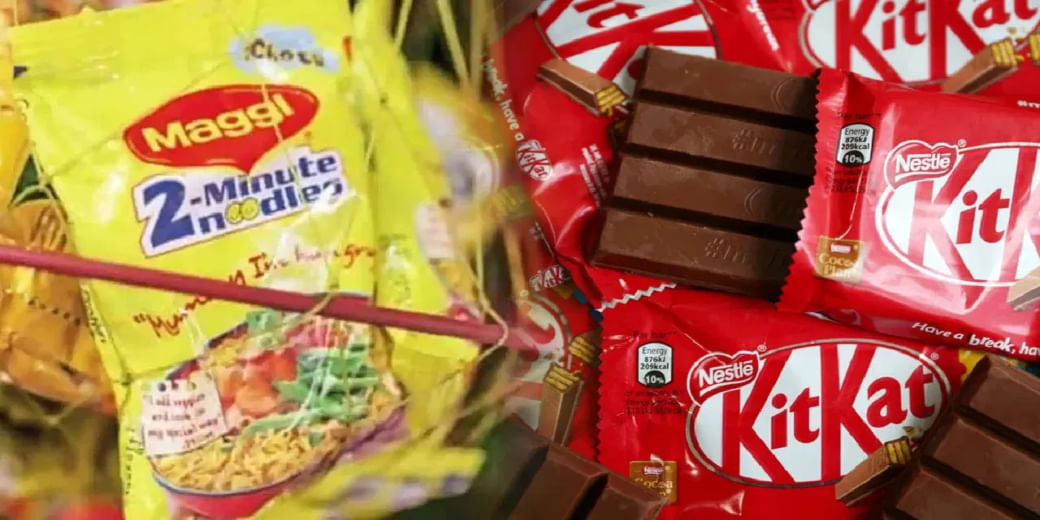Stock at Stake: Nestle to add chocolatey flavour to your portfolio
With consumers becoming more health conscious, the company’s focus on taste as well as nutrition will aid in revenues as well as better relations with all stakeholders

Nestle the FMCG maker of Maggie has reported stellar numbers in the March quarter. Its profits grew 25% (YOY) while its operating revenue saw an increase of 21% (YOY). There was broad-based growth across the segments in both rural as well as urban areas. Volumes also witnessed strong growth. The share has increased 6.48% in past one month to reach Rs 22,888.5. So let’s analyse the fundamentals of the company.
External factors
External factors for the FMCG company are improving. There are expectations that going ahead, demand in rural areas would improve but El-Nino may create headwinds. The sector faced tough times due to high inflationary pressures and subdued demand. Now, as inflation has cooled down, the situation is expected to become better on both revenues as well as margins front. For 2023, Nielsen expects 7-9% growth in FMCG market.
The company
Nestle SA is a global FMCG and it has a presence in India through its subsidiary Nestle India. The company has 8 manufacturing facilities and 4 branch offices in India. Its manufacturing facility spans across North to South India. Nestle India also has an R&D center which is part of the global R&D network of Nestle SA. Nestle India’s R&D center focus on products catering to the needs of whole South Asian regions focusing on both taste as well as nutrition. As of 2022, the company has 6123 wholesale hubs and 8006 redistributors.
Its business has various segments
Beverages: Dominates the coffee market with its Nescafe brand. It’s Nestea iced tea also has a strong brand recall.
Cereals: The company also has a presence in the breakfast segment with Nestle Breakfast Cereals and Koko Crunch
Chocolates and Confectionery: Bar One, KitKat, Munch and Milkybar are among the favorite chocolate of various Indians.
Dairy: Nestle Milkmaid, Nestle EveryDay are quite successful brands of company
Nutrition: The company provides milk and other products for children with brands like Lactgrow, Ceregrow
Food: When it comes to food segment, Maggi brand has become an epitome of 2-minute noodles in India.
Vending and Food Service: With higher aspirations, Indian consumers will spend more on eating outside and to capitalize on that, company has entered into this business.
Share holding Pattern (As on 31st March 2023)
Growth Drivers
– Lower inflation will increase purchasing power of consumers which will help the company in volume growth
– Cooling commodity prices will support margins
– It is reported that the company aims to increase its reach in rural areas and looking to cover around 1.2 lakh villages in the near future
– Increase in demand for premium products is tailwind for Maggi and chocolate brands
– Share of E-commerce in sales in increasing rapidly. With the rise of internet and E-commerce, it can ride along the growth journey
– Aggressively increasing its distribution network. The wholesale hub increased from 3303 in 2020 to 6123 in 2022.
– Its Rurban smart stores increased from 3,486 in 2020 to 16,000 in 2022
Competitive Advantage
– Company has a strong brand value in 2-minute noodles (Maggie), chocolates (Munch, KitKat) etc. Consumers love the taste and the company focuses on various ad campaigns to sustain brand value
– With consumers becoming more health conscious, the company’s focus on taste as well as nutrition will aid in revenues as well as better relations with all stakeholders
– Company is using digitization and data analytics to modernize its value chain. It could integrate the data from different distribution channels as well as different business units to increase efficiency, provide products that customers desire and also improve customer experience. This would cater to all 3 strategies (Lower cost, product differentiation and better customer experience).
– Being part of a leading global FMCG firm company also get management expertise and technical know-how from the parent company.
Risks
– Volatility in commodity prices
– Sluggish rural demand due to El-Nino
– Unable to properly assess changing customer preferences
Financials
Valuation Ratios
Target Price